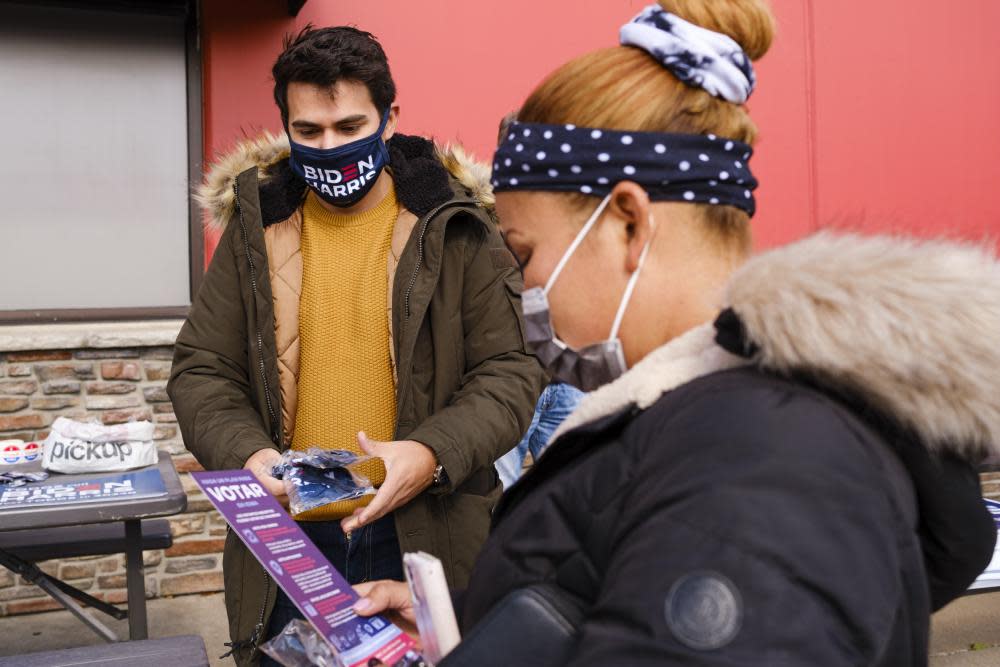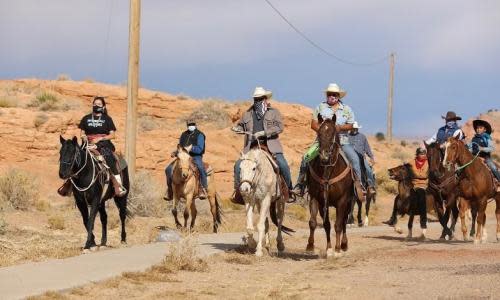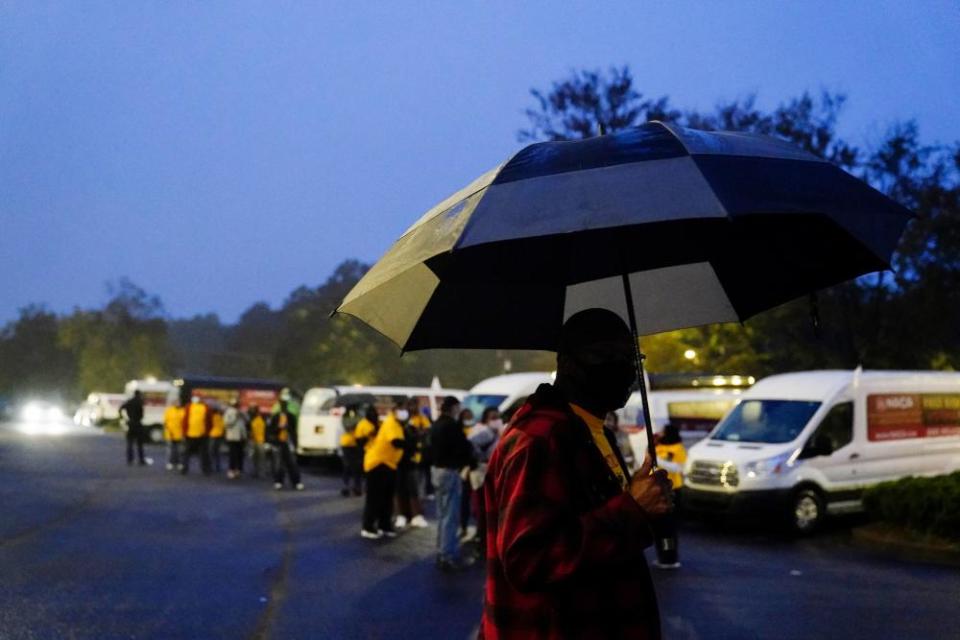Biden campaign boasts its voter outreach beat Obama's 'by a mile'

Although the dust is still settling on the 2020 US presidential election it is clear this cycle was one of significant breakthroughs for Democrats. With historic voter turnout for recent times, Joe Biden’s team secured a Democratic win in Georgia, something that hadn’t happened since 1992, and there was record turnout among young people and Black Americans.
Related: Joe Biden: Black Lives Matter activists helped you win Wisconsin. Don't forget us | Justin Blake
Ashley Allison, Biden and Kamala Harris’s national coalitions director, said the campaign put a greater effort into building a broad coalition of voters than ever before.
“This campaign made a larger investment in coalition work than any other presidential campaign by a mile,” said Allison, who worked on African American outreach for Obama’s 2012 campaign in Ohio, which swung for Obama that year almost entirely due to the Black vote.
She may well be right: the Biden camp had close to 500 employees working on outreach this year. It had a virtual headquarters and people on the ground in key battleground states. Biden’s organizing team reached more than 37 million by phone – and in the final weeks of volunteering, they called, texted and knocked on more than double the number of doors the Obama team did in 2012 even as Obama’s campaign is frequently referred to as ground zero for the technological revolution in political campaigning.
But with the coronavirus pandemic largely preventing the team from physically knocking on doors, they needed to find a way to safely create an in-person presence. That consisted of dropping literature at people’s doors with handwritten notes and following up with phone calls. Phone-banking teams would call in to video chats, trying to recreate the energy of a traditional phone-banking room, to overcome the ennui of calling alone during a global shutdown.
In Arizona, which the Democrats flipped for the first time in 24 years, Biden’s coalitions team did extensive outreach in the Navajo Nation, with indigenous people playing the ceremonial drum to engage voters as they were coming in so they would see themselves as part of the voting experience. In Nevada, horse parades marched down the streets.
“We wanted to engage voters in a time where people were feeling so distant due to the pandemic,” said Allison.

In parts of rural Georgia, where many communities of color are subject to voter suppression and misinformation, Allison had teams touring around in trucks to reach people. “We were going across into the counties to voters who are rarely spoken to. We made sure they had access to the information because we know about the lack of broadband in their community,” she said.
That campaign outreach complemented the work of activists that has been going on for years in states like Arizona, Georgia and Wisconsin. “We could provide resources that in many instances haven’t existed before in political campaigns. Local radio to speak directly to folks, Covid-safe tabling in communities, visibility efforts on the Navajo Nation so people knew it wasn’t just some place we took for granted. In Arizona, doing in-language phone banking with Latino folks,” she said, describing how Biden secured a presidential vote and a second Senate seat in the state.
Allison dismissed some widespread and pointed criticism over Biden’s performance with Latino voters along the Rio Grande in Texas. There, he squandered the 60-point landslide secured by Hilary Clinton in 2016 – winning, but narrowly, by only five points.
“Texas is a place where people have been laying the foundations to turn blue and it didn’t happen this cycle. I don’t think it is a lack of Latino turnout – look at Wisconsin, Pennsylvania, Nevada and Arizona. Latinos turned out in record numbers. We still want to engage on a consistent basis but our overall numbers and our coalition increased,” she said.
The Latino population in Arizona and Nevada has increased since 2016 – making up 30% of the population this year (in Arizona, it doubled). Biden only slightly increased his lead among Latinos in Arizona – taking 63% of the Latino vote according to exit polls, compared with Clinton’s 61% in 2016. In Nevada, Trump improved in popularity among Latinos – taking 37% of the Latino vote, while Biden’s 56% was below Clinton’s 60% in 2016.

Early analysis suggests that the Latino vote turned places like Wisconsin and Pennsylvania blue, with Biden taking upwards of 60% of the Latino vote in each area.
One of the biggest swings for Biden was among young people – most of whom did not support him in the Democratic presidential primaries, but came out for him in force by election day. Biden’s support among people aged 18 to 29 was around 69%, with high increases in turnout.
According to Allison, that’s because the coalitions team made sure to persuade these voters, rather than simply work on getting them to turn up.
“We believed they needed to hear from Biden and Kamala Harris, and we weren’t upset or intimidated that was the case,” she said. “Young people have always felt that they might not have a voice in politics. We wanted to let them know you can come and have a conversation with the campaign even if you have not supported Joe Biden yet.”
In terms of how they will keep those voters engaged, Allison said it’s all about delivery.
“People want something different and [we will] be held accountable. The proof point in 2022 or 2024 will come depending on whether Biden and Harris really lived up to the commitments they made,” she said.

 Yahoo Movies
Yahoo Movies 
